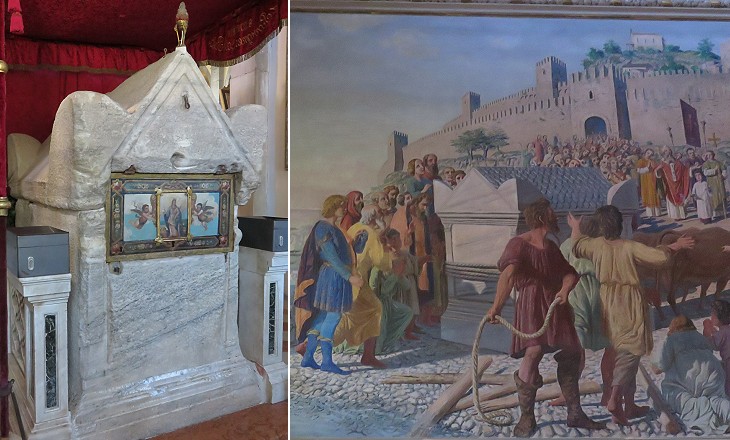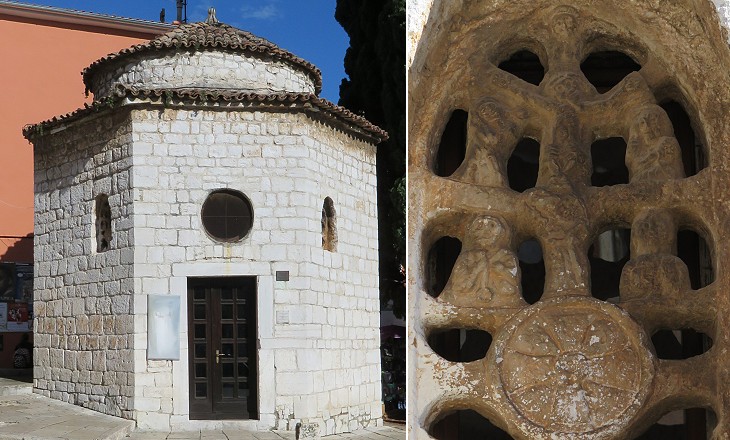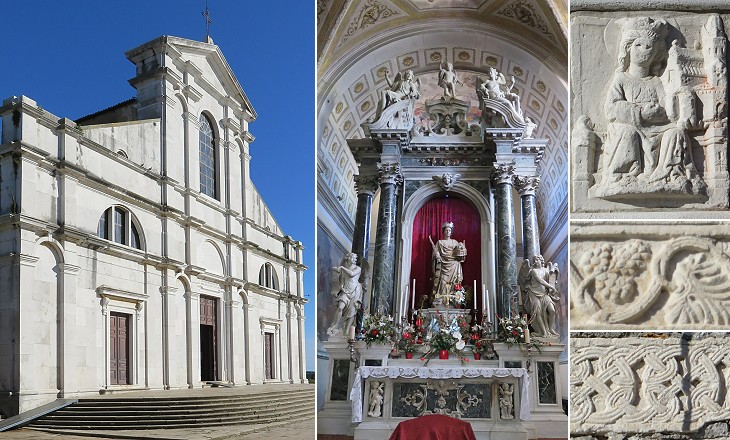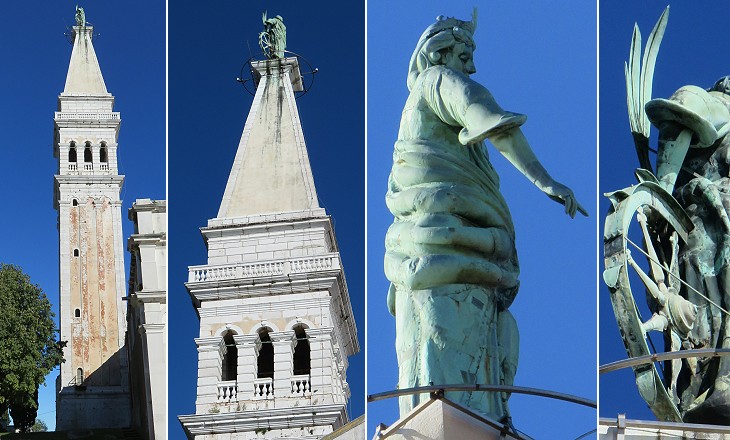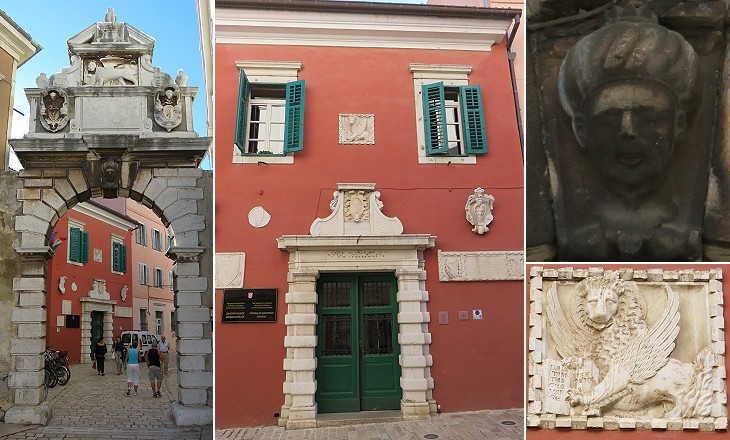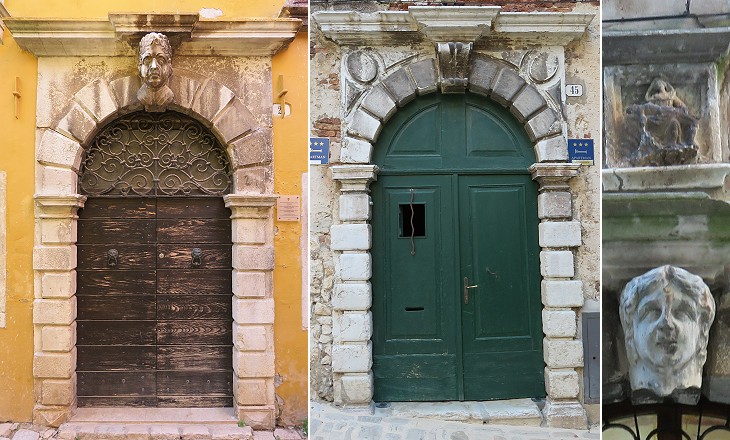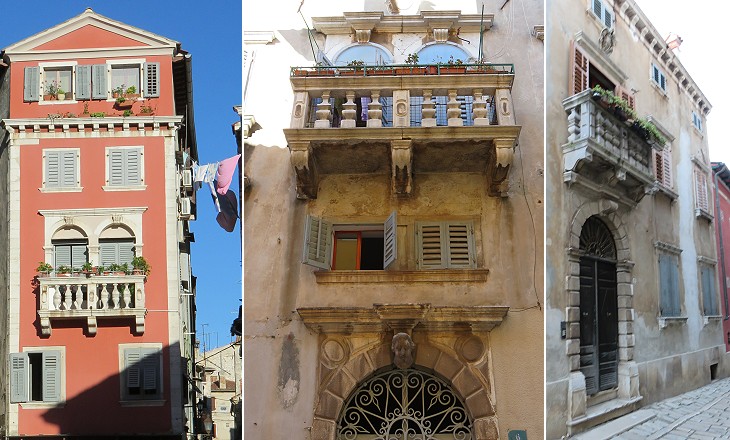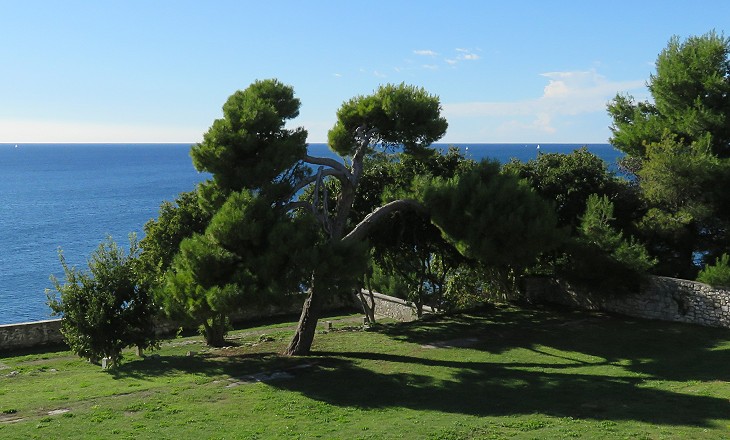  What's New! Detailed Sitemap All images © by Roberto Piperno, owner of the domain. Write to romapip@quipo.it. Text edited by Rosamie Moore. Page added in February 2015. |
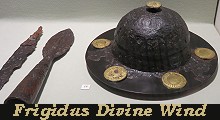 - Rovigno (Rovinj) - Rovigno (Rovinj)(Longobard weapons at Museo Archeologico di Cividale) You may wish to read an introduction to this section first.
A Roman settlement known as Arupinum or Ruginium is recorded as a vicus, a village, of Pola. It attracted refugees from inland locations when the region was invaded by the Avars and the Slavs, because it was situated on an islet. The only memory of the Roman past of Rovigno is a roughly cut sarcophagus which according to tradition washed ashore in 800 with the relics of St. Euphemia of Chalcedon, a IVth century martyr. The Greek Orthodox Church maintains that the relics are in the Church of St. George, inside the Patriarchate of Constantinople.
This small heptagonal building, which eventually was utilized as a baptistery, is dated ca VIIIth century and it stands outside the town walls near the site of the bridge which linked Rovigno to the mainland. After the Roman period the town was first recorded in a chronicle of 804.
The only place of any consequence on the coast between Pola and Parenzo is Rovigno, a flourishing town occupying a lofty peninsula between two harbours. A large modern church with a campanile crowns the summit of the pyramidal hill, the sides of which are covered by the houses of the town. The general view from the sea is extremely picturesque, but Rovigno contains nothing to make it worth while to go ashore. The church (..) is spacious and handsome, but quite uninteresting, and the town itself is devoid of any architectural remains in its narrow and tortuous streets, though here and there the Lion of St. Mark has survived. Sir Thomas Graham Jackson - Dalmatia, the Quarnero and Istria - 1887 Notwithstanding the relics of St. Euphemia, Rovigno was not a bishopric see and during the Middle Ages this meant a second class status for the town.
The bell tower was completed in 1758 when a gigantic bronze statue of St. Euphemia was placed at its top. It is similar to those existing at Grado and other towns belonging to the Republic of Venice. Unlike nearby Parenzo, Rovigno did not experience a decrease in population because of pestilences in the XVIIth century and in 1763 the channel which separated the islet from the mainland was filled in order to enlarge the town.
The towns of Istria competed for having the tallest and finest bell towers which all resemble those of Venice, such as that of S. Giorgio Maggiore. They provided useful reference points for seamen, in particular those of Buie which is situated at the top of a hill with a commanding view.
In the XIIIth century Rovigno sought the protection of Venice and it remained a possession of la Serenissima (the Most Serene Republic) until 1797. During the War of Chioggia (1378-81) it was sacked by the Genoese who took away the relics of St. Euphemia. These were recovered by the Venetians who however were reluctant to return them to Rovigno. They eventually did in 1401 after a series of petitions from the inhabitants of the small town. Arco dei Balbi was built in 1680 and modified a century later. It celebrated an enlargement of Rovigno.
The streets of the oldest part of Rovigno which have not been modified to adapt them to modern requirements resemble those one can see at Pola and Trieste.
The Costantini were one of the wealthiest families of Rovigno and local chronicles cite them as benefactors. In 1764 a member of the family donated a building and sixteen tombs to a brotherhood. However they did not hesitate to pursue their rights: a litigation between them and the Town of Rovigno which concerned the construction of a bakery went on from 1707 to 1793.
Small balconies are a typical feature of Venetian architecture which can be observed in many buildings of Rovigno. Overall most of the town seems to have been built in the XVIIIth century. Two Provveditori alle Strade, magistrates in charge of controlling the development of the town and improving its streets, were appointed in 1717.
Move to: Introductory page Roman Aquileia - Main Monuments Roman Aquileia - Tombs and Mosaics Early Christian Aquileia Medieval Aquileia Chioggia: Living on the Lagoon Chioggia: Churches Chioggia: Other Monuments Roman and Medieval Cividale del Friuli Venetian Cividale del Friuli Grado Palmanova Roman and Byzantine Parenzo (Porec) Medieval and Venetian Parenzo (Porec) Roman Pola (Pula) Medieval and Venetian Pola (Pula): Churches Medieval and Venetian Pola (Pula): Other Monuments Pomposa Roman Ravenna Ostrogothic Ravenna Byzantine Ravenna: S. Apollinare in Classe Byzantine Ravenna: S. Vitale Byzantine Ravenna: Other Monuments Medieval Ravenna Venetian and Papal Ravenna: Walls and Gates Venetian and Papal Ravenna: Churches Venetian and Papal Ravenna: Other Monuments Roman and Medieval Trieste Modern Trieste  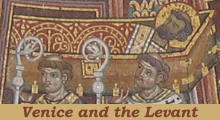 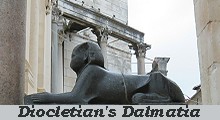  |
